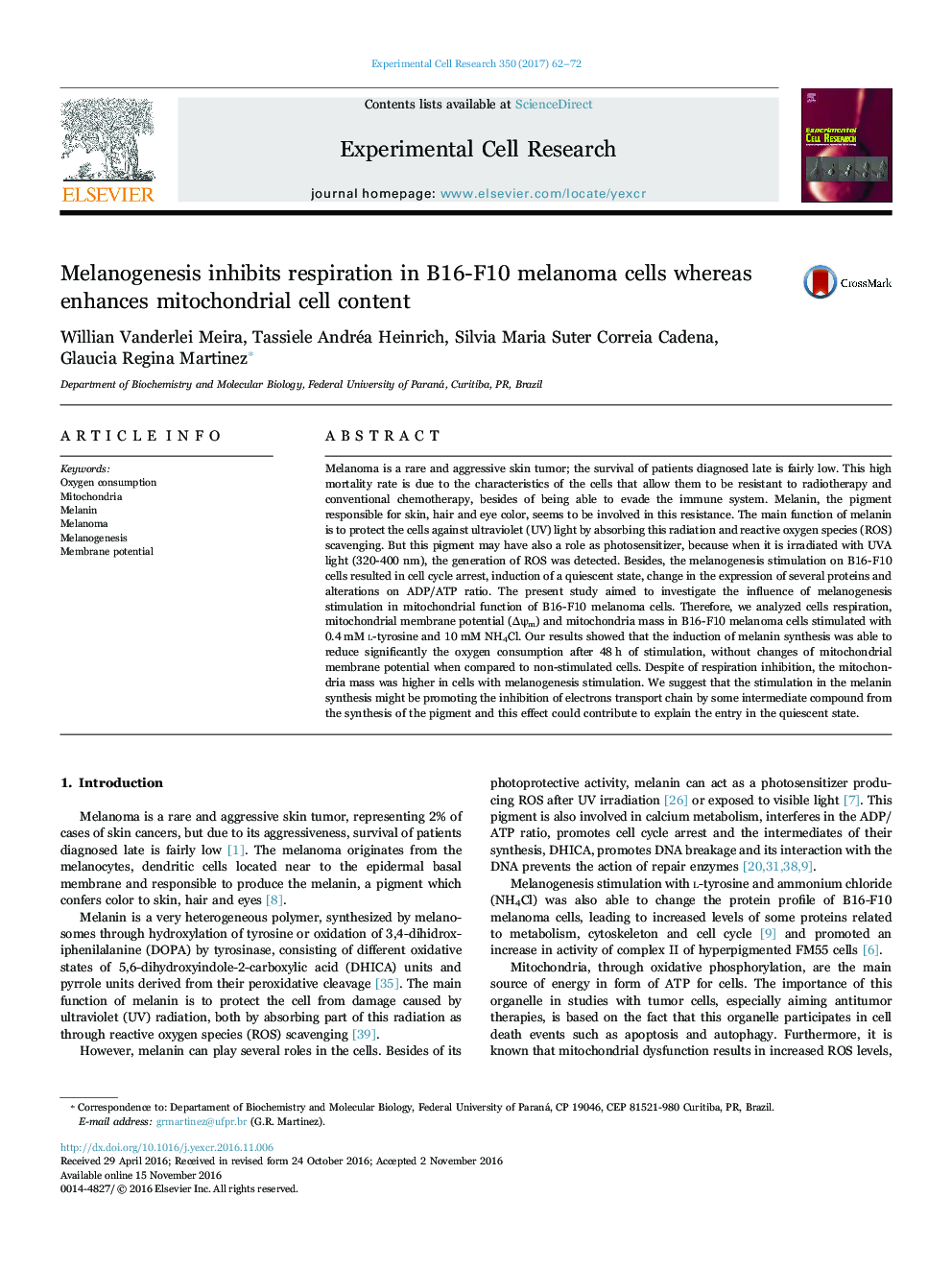| Article ID | Journal | Published Year | Pages | File Type |
|---|---|---|---|---|
| 5527286 | Experimental Cell Research | 2017 | 11 Pages |
â¢Melanoma pigmentation alters mitochondrial respiration.â¢Induction of melanin synthesis by 48 h do not change mitochondrial membrane potential.â¢Mitochondria mass was higher in cells with melanogenesis stimulation.
Melanoma is a rare and aggressive skin tumor; the survival of patients diagnosed late is fairly low. This high mortality rate is due to the characteristics of the cells that allow them to be resistant to radiotherapy and conventional chemotherapy, besides of being able to evade the immune system. Melanin, the pigment responsible for skin, hair and eye color, seems to be involved in this resistance. The main function of melanin is to protect the cells against ultraviolet (UV) light by absorbing this radiation and reactive oxygen species (ROS) scavenging. But this pigment may have also a role as photosensitizer, because when it is irradiated with UVA light (320-400 nm), the generation of ROS was detected. Besides, the melanogenesis stimulation on B16-F10 cells resulted in cell cycle arrest, induction of a quiescent state, change in the expression of several proteins and alterations on ADP/ATP ratio. The present study aimed to investigate the influence of melanogenesis stimulation in mitochondrial function of B16-F10 melanoma cells. Therefore, we analyzed cells respiration, mitochondrial membrane potential (ÎÏm) and mitochondria mass in B16-F10 melanoma cells stimulated with 0.4Â mMÂ L-tyrosine and 10Â mM NH4Cl. Our results showed that the induction of melanin synthesis was able to reduce significantly the oxygen consumption after 48Â h of stimulation, without changes of mitochondrial membrane potential when compared to non-stimulated cells. Despite of respiration inhibition, the mitochondria mass was higher in cells with melanogenesis stimulation. We suggest that the stimulation in the melanin synthesis might be promoting the inhibition of electrons transport chain by some intermediate compound from the synthesis of the pigment and this effect could contribute to explain the entry in the quiescent state.
